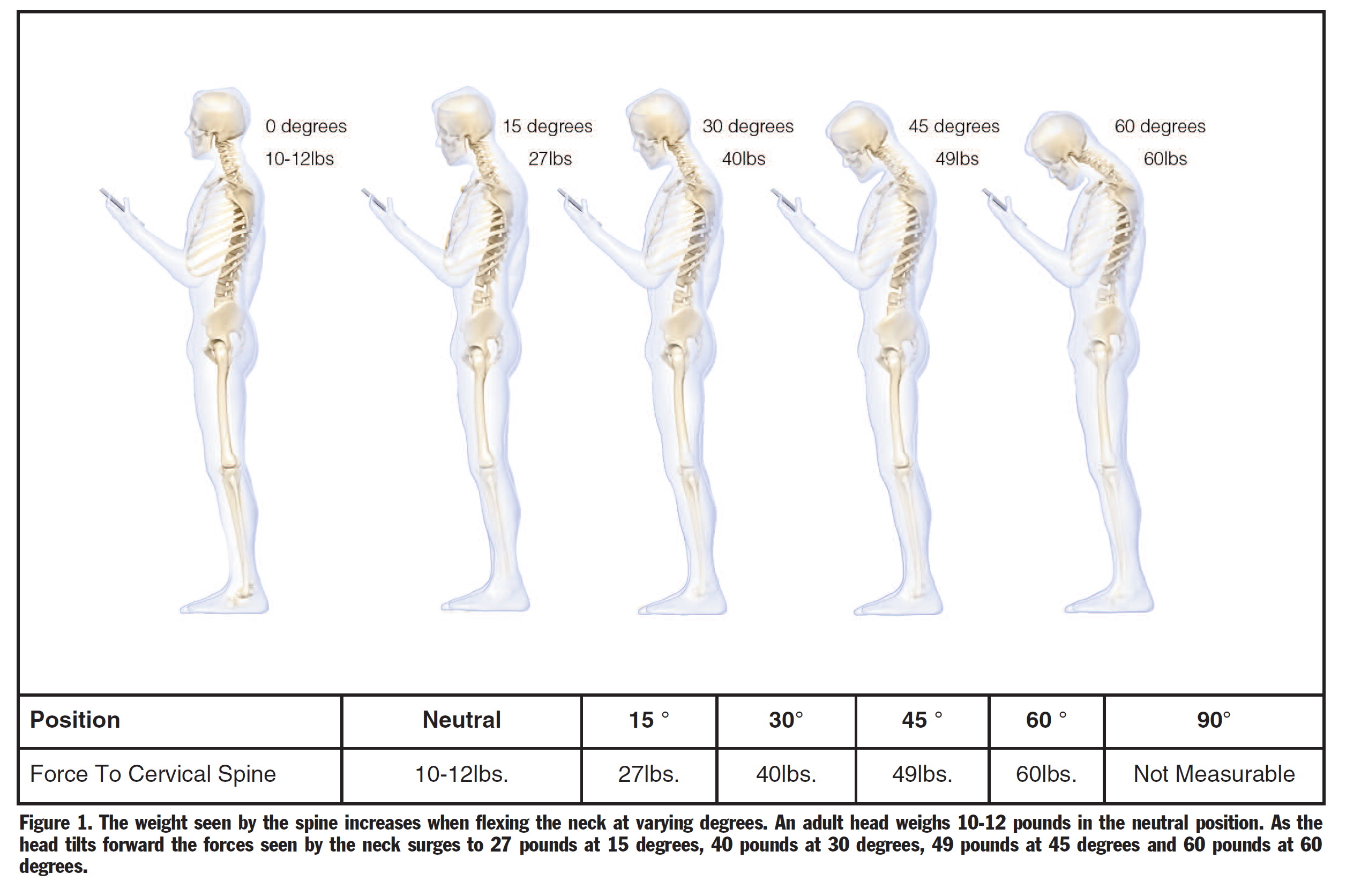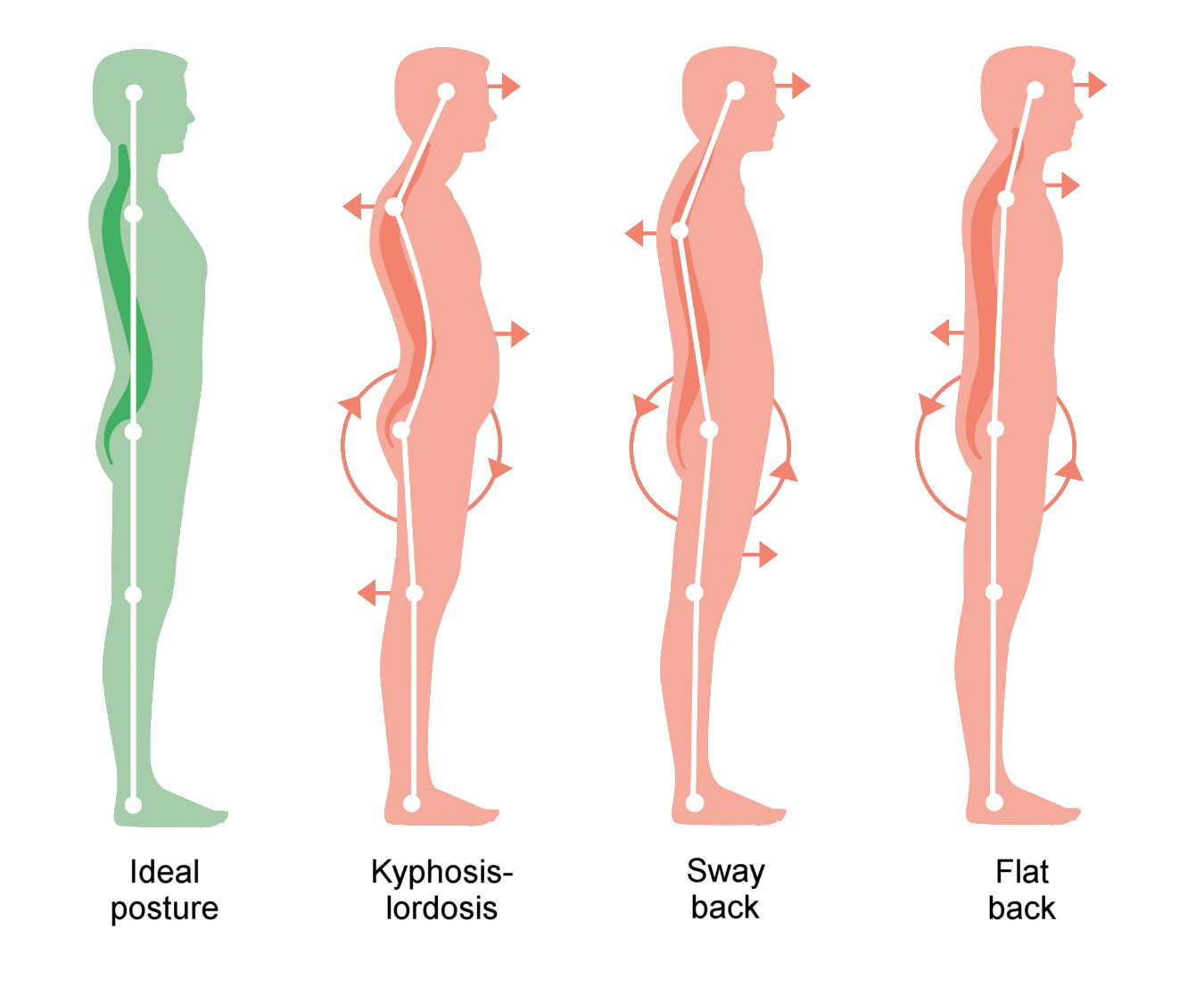Fix Forward Head Posture with Pandiculation
Forward head posture is becoming an epidemic due to constant use of smartphones and computers. When we look downward over and over, the muscles in the front of our neck, our chest, and our abdomen become chronically contracted—and they keep us stuck in forward head posture all the time.
The reason that health professionals are so concerned about forward head posture is that it leads to many serious issues like disc problems, numbness in the arms and hands, muscle spasms, chronic pain, shallow breathing, headaches, and temporomandibular joint disorders.
Your posture can feel as though it’s out of your control and impossible to change. The reason it feels like this is because when your muscles are chronically contracted, they are being controlled automatically by your nervous system, and you’ve lost full voluntary control of them.
Luckily, as you’ll learn in this post, you can regain voluntary control of your muscles and release deeply held muscular contraction with pandiculation.
What is forward head posture?
Forward head posture describes our posture when we tilt our head downward and/or bring our head and neck in front of the rest of our spine.
Research released in 2014 by Dr. Kenneth Hansraj, Chief of Spine Surgery at New York Spine Surgery & Rehabilitation Medicine in New York, brought a great deal of attention to forward head posture. His research determined the now oft-quoted measurements of how increasing strain is put on our cervical spine the further forward we hold our head.

Reprinted from Assessment of Stresses in the Cervical Spine Caused by Posture and Position of the Head
Why do we develop forward head posture?
Before personal computers and smartphones became ubiquitous, forward head posture was typically only seen in older people. As we age, the reflexive muscular contraction that occurs with stress builds up, pulling our head and shoulders forward and causing the rounded posture we associate with aging.
However, now that people of all ages—even toddlers—are using personal electronic devices, we’re seeing forward head posture develop at very young ages. When you consider that the average person between the ages of 8 and 18 spends about 7.5 hours a day using some form of electronic media, it’s easy to see how quickly this posture can become a habit.
It’s virtually impossible to use a smartphone without tilting your head downward and contracting your neck muscles, biceps, pectoralis, and upper rectus abdominis. It takes a great deal of conscious attention, as well as an ergonomic setup if you’re sitting down, to prevent this posture from becoming habitual.
We can walk around a shopping mall to observe the effects of smartphones, computers, and a sedentary lifestyle on young people. It always makes me sad to see a lovely teenager in the prime of life who has already begun to round forward as if they’re 80 years old.

A study of over 800 Australian teenagers found that computer use was associated with forward head posture. The forward flexion of the teenagers’ necks was consistent whether the teens were looking straight ahead, looking downward, sitting in a slumped position, or standing up. At their young age, forward head posture was already so deeply learned that their necks remained flexed forward even when they weren’t at the computer.
The muscular patterns of forward head posture
Let’s say you’re standing up perfectly straight. You pick up your smartphone, bending your arms and bringing them in toward your body. You tilt your head downward to look at your phone, and probably bring your head in front of your body a little in order to see the screen better.
All the muscles that flex your cervical spine forward—your sternocleidomastoid, anterior scalene, longus capitis, and longus colli—are now contracted. So are your biceps, which flex your elbows; your pectoralis muscles, which rotate your shoulders inward; and probably your upper rectus abdominis, which flexes your thoracic spine, rounding your upper back.
Immediately, the muscles in your back engage so that you won’t fall forward. This contraction happens reflexively and without our conscious awareness. Our vestibular and proprioceptive systems are good like that—they’ll do whatever they can to keep us from falling over.
When you take a break from looking at your phone, the muscles that extend your cervical spine contract to bring your head up so you can look straight ahead.
People compensate for the displaced weight of their head in three typical ways. Some arch their lower back, so that both the kyphotic and lordotic curves of their spine are exaggerated. Others shift their hips forward and come into sway back posture. Others contract their lower abdominals and round forward into flat back posture.

The dangerous health effects of forward head posture
If we only come into forward head posture once in a while, it’s not a big deal. But when we’re in this posture every day, for multiple hours a day, our nervous system notices.
Our nervous system likes to be as efficient as possible, so when we repeat a posture over and over, it will begin to keep the muscles involved in that posture partially contracted all the time. This is the process of developing muscle memory; it saves us time and conscious brainpower, but it results in chronic muscle tension, reduced sensorimotor awareness, and a host of health problems.
Without conscious intervention, muscle tension and our resulting posture only get worse with time. Our proprioception adjusts so that we feel more and more comfortable in the unnatural posture, and our gamma loop adjusts to maintain increasing levels of muscle tension.
Tight neck muscles can be sore and painful, and they contribute to headaches and temporomandibular joint disorders. Chronic muscle tension in the cervical spine also compresses the cervical vertebrae. This often leads to disc degeneration, bulging or herniated discs, osteoarthritis, Dowager’s Hump, and tingling or numbness in the arms and hands.
The contraction of the pectoralis muscles and upper rectus abdominis that typically occurs with forward head posture can lead to thoracic outlet syndrome, shallow breathing, and high blood pressure.
The contraction of the lower back muscles that inevitably occurs in order to keep us from falling forward leads to tightness and pain in the lower back, muscle spasms, lumbar disc problems, osteoarthritis, and sciatica.
I hope these health problems have gotten your attention. Even if your forward head posture is mild right now, it can easily get worse as you get older, and it is much easier to fix it now than after you’ve developed a painful condition.
To learn more about the health effects of your posture, read 10 Shocking Ways That Your Posture Affects Your Health.
Why pandiculation is the most effective way to correct forward head posture
Many physical therapists, chiropractors, and trainers recommend stretching the neck and shoulders and strengthening the back and shoulders in order to correct forward head posture. Unfortunately, these approaches don’t address the underlying cause of the problem: the chronic, subconscious contraction of the muscles in the front of the neck, the chest, and upper abdomen.
When our nervous system has learned to keep these muscles tight, no amount of stretching or pulling in the opposite direction with strong back and shoulder muscles will release them. We must go through a process of retraining our nervous system in order to reduce the resting level of tension in these muscles and change our habitual posture.
Pandiculation is our nervous system’s innate response to a buildup of tension in the muscles. This natural process reduces muscle tension by restoring normal gamma loop activity. Clinical Somatics exercises are voluntary pandiculations, and they use our natural pandicular response to release tight muscles. Since pandiculation reduces muscle tension through learning rather than stretching or external manipulation, the results are typically long-lasting and cumulative.
Pandiculation exercises for forward head posture
The following exercises from the Level One & Two Courses are the most effective exercises for releasing the tight muscles that cause forward head posture and the associated postural patterns.
If you want more guidance on how to improve your posture, please read How to Retrain Your Proprioception and Posture.
LEVEL ONE COURSE
Arch & Flatten: This exercise allows you to release and regain control of the lower back and abdominal muscles, improving the alignment of the pelvis and lower back.
Arch & Curl: This exercise releases the abdominal, chest, and neck muscles. If you do just one exercise per day to address forward head posture and/or postural kyphosis, this should be it!
One-Sided Arch & Curl and Diagonal Arch & Curl: Like the Arch & Curl, these exercises release the abdominal, chest, and neck muscles. They focus on one side of your body at a time, allowing you to address imbalances in your muscular patterns.
Flowering Arch & Curl: This is a bigger, full-body version of the Arch & Curl. It has the added benefit of releasing internal rotation of the shoulders.
LEVEL TWO COURSE
Head Lifts: This exercise works directly with releasing the muscles that pull the head forward (independent of pulling the rib cage forward and down), including the sternocleidomastoid and anterior scalene.
Proprioceptive Exercise 1: This is a seated exercise practiced in front of a mirror, allowing you to retrain your posture and proprioception.
Scapula Scoops 2: This exercise releases the pectoral muscles, which rotate the shoulders inward and are typically tight in people with forward head posture.
Diagonal Curl: This exercise releases the obliques and the pectorals, allowing the chest to open up.
Recommended reading:
The Pain Relief Secret: How to Retrain Your Nervous System, Heal Your Body, and Overcome Chronic Pain by Sarah Warren, CSE
Somatics: Reawakening the Mind’s Control of Movement, Flexibility and Health by Thomas Hanna

